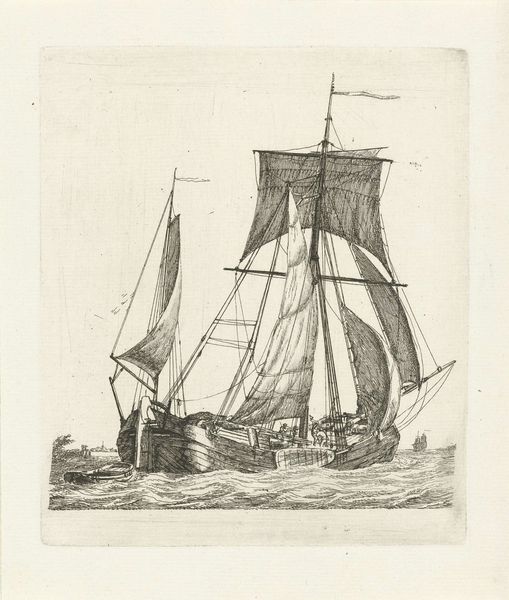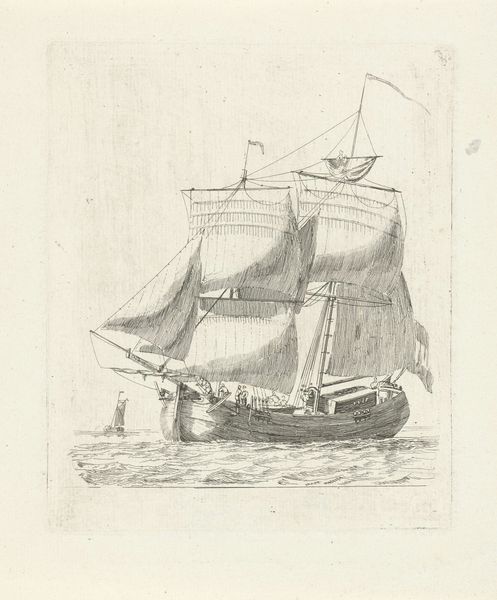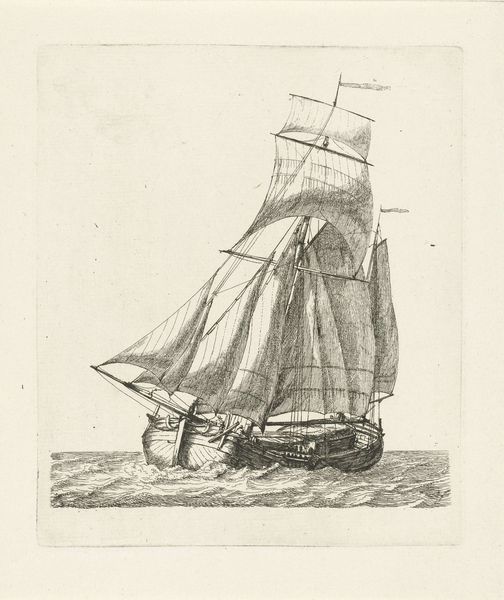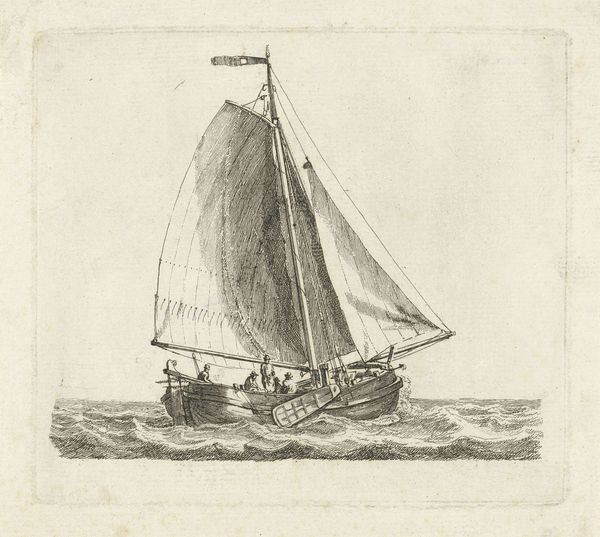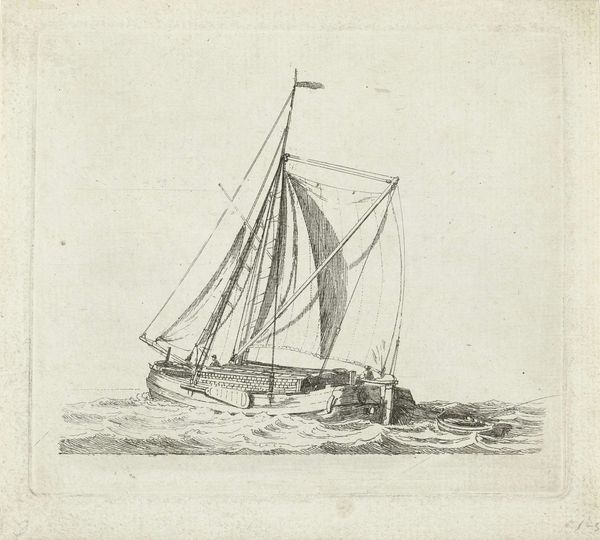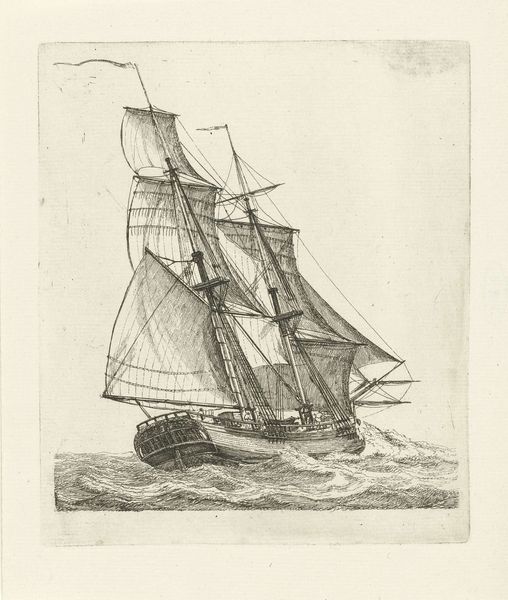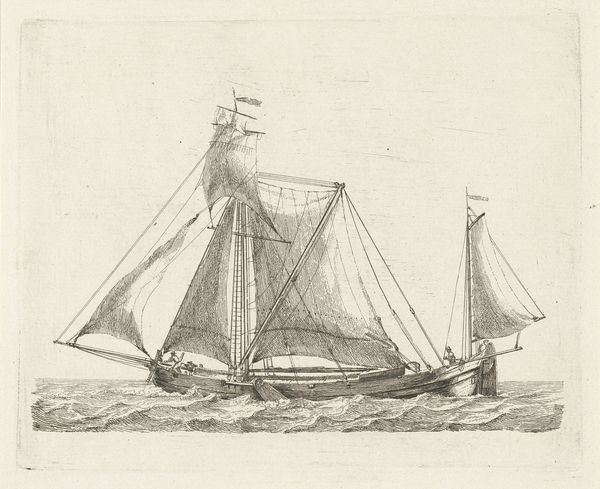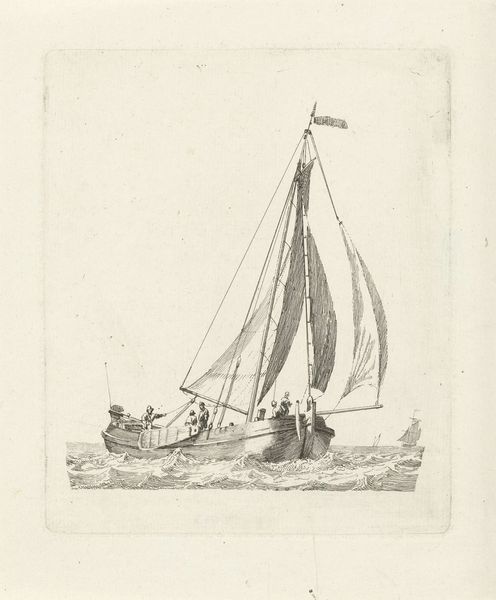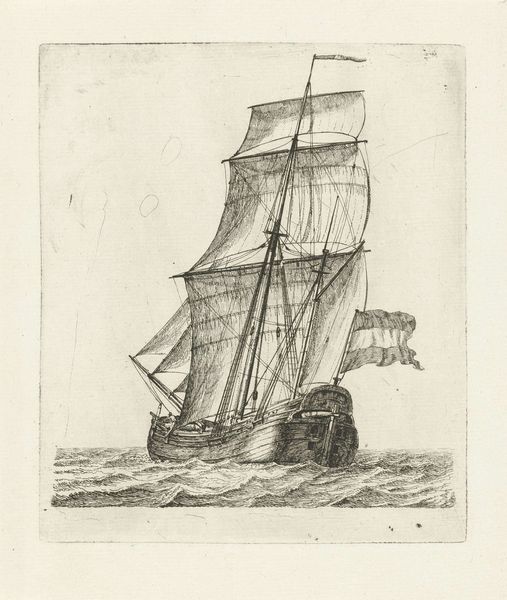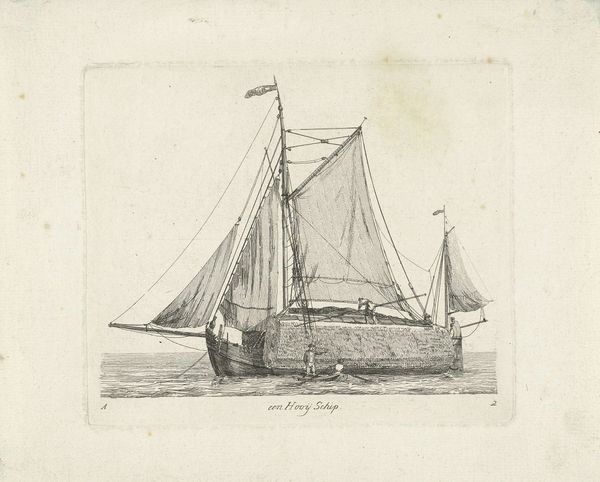
drawing, print, engraving
#
drawing
#
light pencil work
#
quirky sketch
#
dutch-golden-age
# print
#
pen sketch
#
landscape
#
personal sketchbook
#
idea generation sketch
#
sketchwork
#
pen-ink sketch
#
line
#
sketchbook drawing
#
storyboard and sketchbook work
#
engraving
#
realism
#
initial sketch
Dimensions: height 154 mm, width 122 mm
Copyright: Rijks Museum: Open Domain
Curator: Here we have Gerrit Groenewegen’s "Zeilschip op de golven," or "Sailing Ship on the Waves," from 1787. It's an engraving, part of our collection here at the Rijksmuseum. Editor: My first impression is one of movement. The ship really feels like it's being tossed about. There is a dramatic flair but executed with quite precise lines. Curator: Absolutely. Groenewegen was known for his detailed maritime scenes, often documenting specific types of ships and nautical activities. It offers insight into Dutch naval prowess and trade during that period. This piece reflects the intersection of art, commerce, and power. Editor: What interests me is the implied narrative. Is this a trading vessel? A warship? Who are the people on board, and what are their stories? Are they free or conscripted? The image opens up a much wider history of Dutch colonialism and maritime power that needs exploring. Curator: That's a crucial point. The sea, while seemingly a space of freedom, also represented the channels through which the Dutch exerted colonial control and participated in the exploitation of resources and people. Editor: We also need to remember how maritime art served nationalistic purposes. Glorifying naval power in art had a clear socio-political function. Images like these shaped public opinion and fostered a sense of national pride often built on exclusion and oppression of other groups. Curator: Certainly, the visual language here is one of dominance. The ship is the central focus, cutting through the waves, asserting itself against the natural world. What could be a romantic scene has darker undertones when viewed critically. Editor: Exactly. As we admire the artistic skill, we must also challenge the historical narratives that these artworks propagate. It invites us to confront uncomfortable truths about power structures. Curator: Thinking about art’s public role is also key here: consider that Groenewegen's work would have been displayed in homes and public spaces, subtly reinforcing these societal norms and values. Editor: Reflecting on this, I’m struck by the image's visual impact and what it omits. It’s a stark reminder of art’s capacity to both reflect and shape our understanding of history. Curator: And it invites us to question not just what is represented but what has been excluded from the frame.
Comments
No comments
Be the first to comment and join the conversation on the ultimate creative platform.
